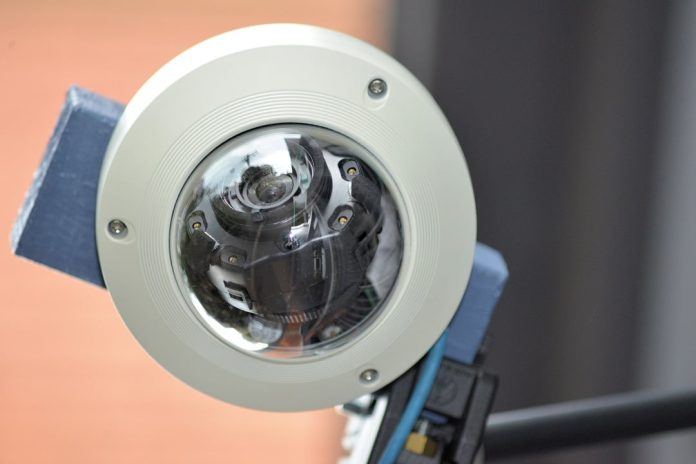Samsung’s SNV-8081RP IR dome has been at the SEN office for some months awaiting testing. I liked the Samsung SNO, the bullet version of this camera engine a lot. Would I warm to the fixed dome version of the camera?
SETTING up Samsung cameras is easy and once I get everything sorted out, I’m very pleased with the Samsung SNV-8081RP dome – it doesn’t hit me immediately but this camera just does a lot of things very well, indeed. The standout feature is the huge resolution – there’s so much detail I can’t see it all at once on my 1080p screen – I really only get the benefit with digital zooming.
For street work, this performance is great. You use optical zoom to get to the focal length you want and then rez up the image stream with digital zoom – it takes a long time to get to pixellation with the Samsung. You never have the feeling you often get with 1080p domes that past a certain point – between 12 and 16m at wider angles of view – there’s no hope of getting worthwhile details. With 5MP of available resolution up your sleeve, no matter where you are in the varifocal there’s always much more detail in the mouse wheel.
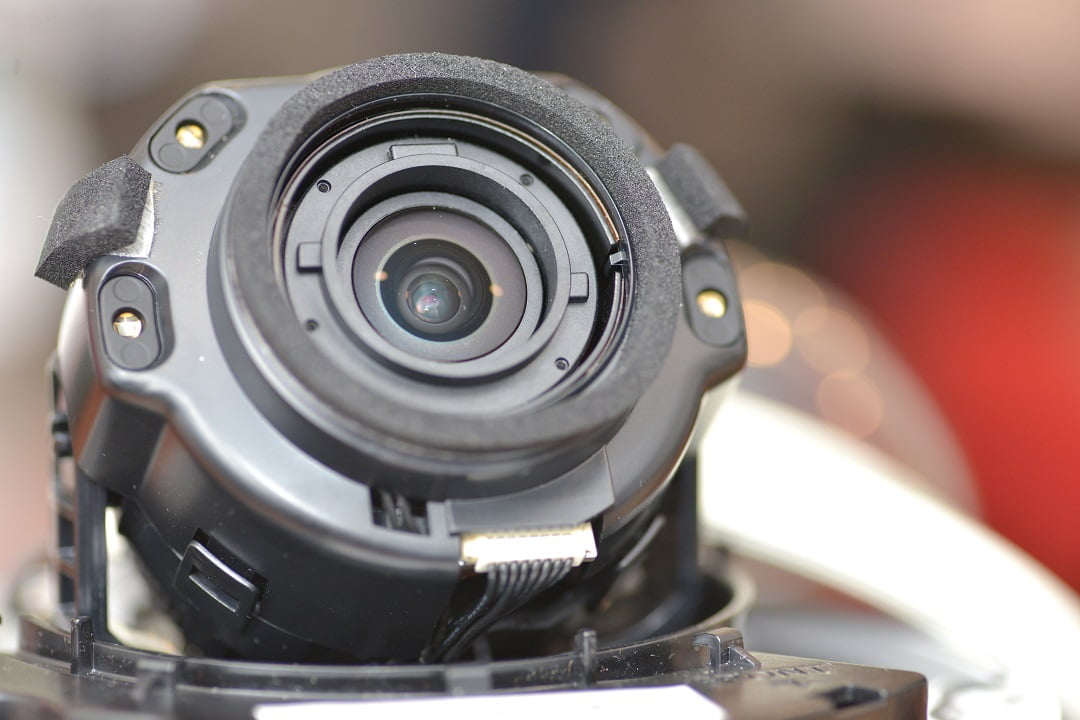
Before we get on, let’s take a run through the specifications of the camera. The Samsung SNV-8081RP is a vandal resistant IR dome with a maximum resolution of 2592 x 1944 pixels (5MP). The progressive scan sensor is a 1/1.8-inch 5MP CMOS S/N ratio is 50dB. The 8081R is fitted with a fast F1.3 3.6-9.4mm motorised varifocal lens, giving the equivalent of 2.4x optical zoom. Horizontal angle of view is 93.4 degrees at the wide end and 39.2 at the long end. Vertical viewing angle is 68 wide and 29.3 long. Hyperfocal distance is half a metre.
Minimum scene illumination is quoted at 0.15 lux in colour, even less in monochrome with no IR and 0 lux in monochrome with the 30m IR activated. The low light numbers for colour are more realistic than most and while we don’t get below about 2 lux at the lens in the back lane, the Samsung outperforms many competitors thanks to its low noise characteristics and good colour rendition in low light. I have to shunt the camera into night mode manually.
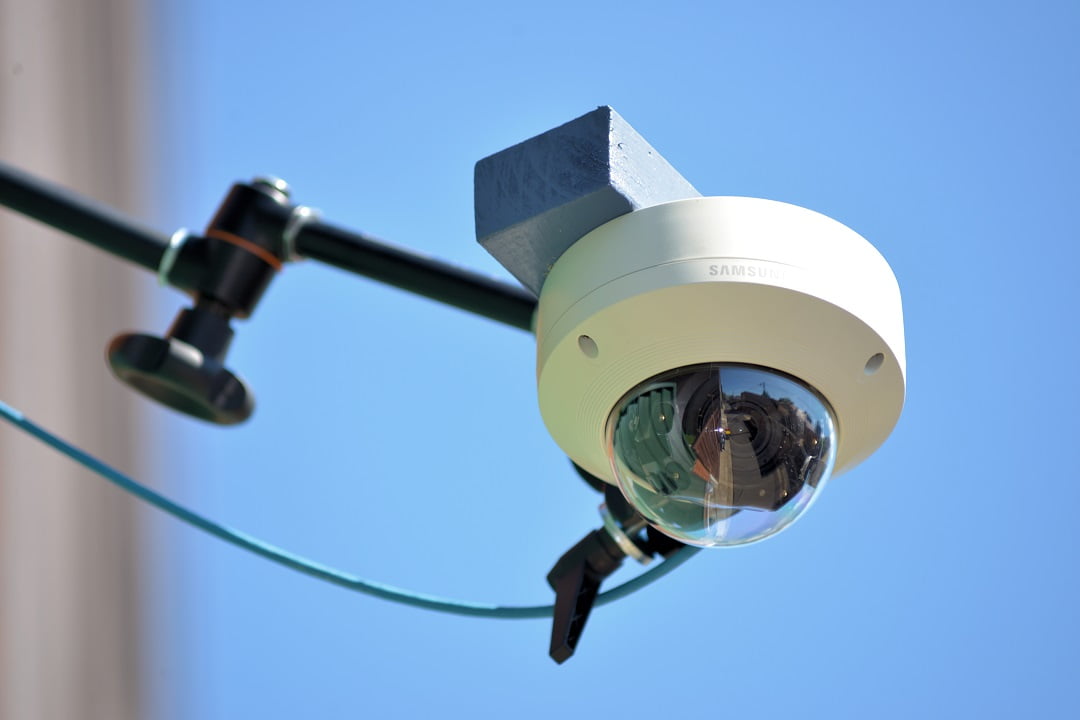
Compression options include H.265, H.264 and MJPEG video compression format H.265 in main, baseline and high options. WDR is 120dB and there’s simple focus, P-Iris, tampering alarm, audio detection, SD/SDHC/SDXC memory slot, NAS, local PC support, hallway view (rotation 90/270 degrees) and lens distortion correction. The camera is IP66-rated for weather and IK10 for vandalism and it’s nicely made. It’s just the right size for a camera of this performance level, at 160mm (W) x 118.5mm (H) and weight is a relatively svelte 955g. Current draw is 12-13W and when it comes to temperature, the camera can handle -30C to 60C. While moving the camera around during the test, I can hear a wee fan running inside the dome housing to keep things cool.
There’s an alarm input/output, alarm events can triggered by motion detection, tampering, audio detection and network disconnect. Alarm events can send tiles to FTP and E-mail, local storage (SD/SDHC/SDXC) or NAS recording There are loads of resolution and frame rate options. There’s CBR or VBR bitrate control, you can stream up to 3 profiles, there’s audio-in selectable and audio out line out with audio compression formats including G.711 u-law/G.726 and others at selectable bandwidths.
Test driving the Samsung 8081R IR Dome
We are running this camera with a NetGear ProSafe GS108P PoE switch on our dedicated Dell Optiplex 9020 i7 server via the Axis camera browser. Installation is as easy as pie. The camera is very nicely made – typical Samsung. Has many thoughtful features and comes with stuff to help installer get it into place. Digital zoom is strong, too. It’s not like a mechanical PTZ but it works well. As usual, I go through settings to get things as I want them.
It’s all simple enough. I put Day and Night to auto, BLC to auto, WDR to auto, turn on Contrast Enhancement SSDR (Samsung Super Dynamic Range, turn on Digital Noise Reduction SSNR (2D+3D noise filter), leave motion detection off, leave privacy masking alone. I leave the Flip and IVA functions alone. I put gain control to medium, white balance to outdoor, I leave LDC off to start with and turn it on later. I twiddle with shutter speed throughout. During the night it’s at 1/30th but during the afternoon I set it to 120th of a second to improve detail.
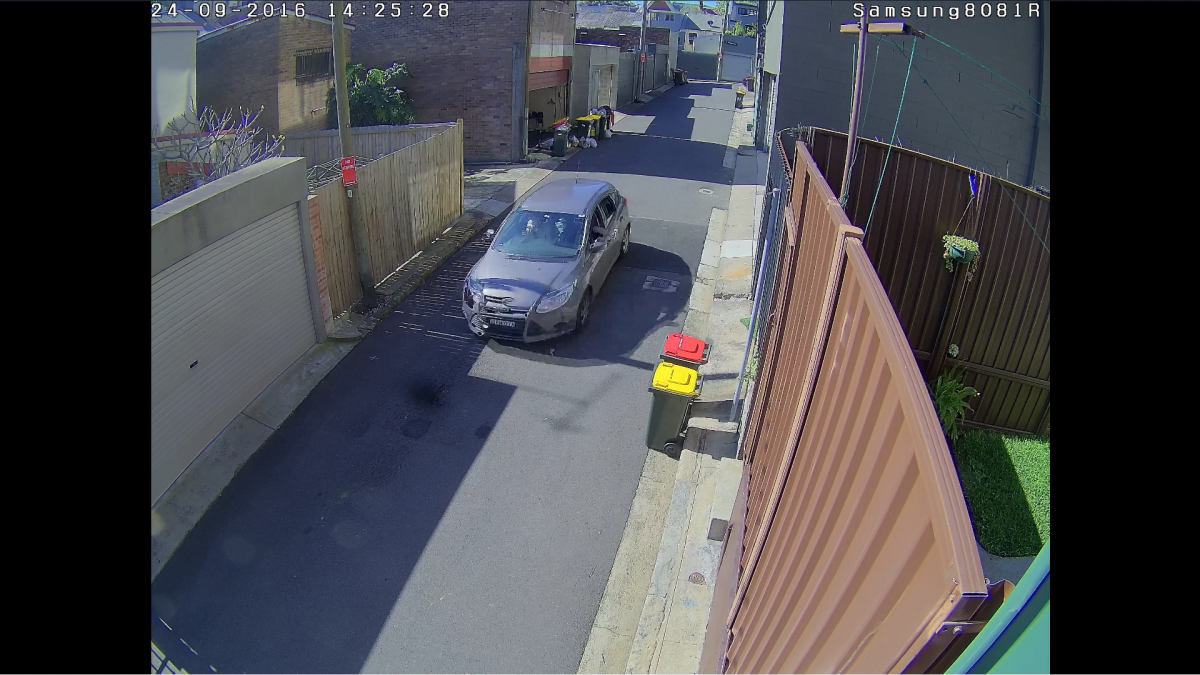
Here we are at full wide – you can see the characteristic CAs and the strong barrel distortion – the distortion correction fixes the barrel distortion completely at full wide – it also disappears at longer focal lengths…WDR performance is great with no tendency to overexpose in external applications.

Zoom showing detail in grass blades…
With all this done, it’s time to play with the camera. With the camera set up, I sit down and drive things through the iPolis Network Camera Webviewer. The camera is mounted over the back lane, with strong sidelight and a 70m depth of field. There are plenty of walls around to look at distortion characteristics. Distortion at the wide end is very strong. It’s complex moustache distortion comprising primarily barrel distortion that looks up towards 18 per cent, giving way to mild pin cushion distortion at the edges of the lens.
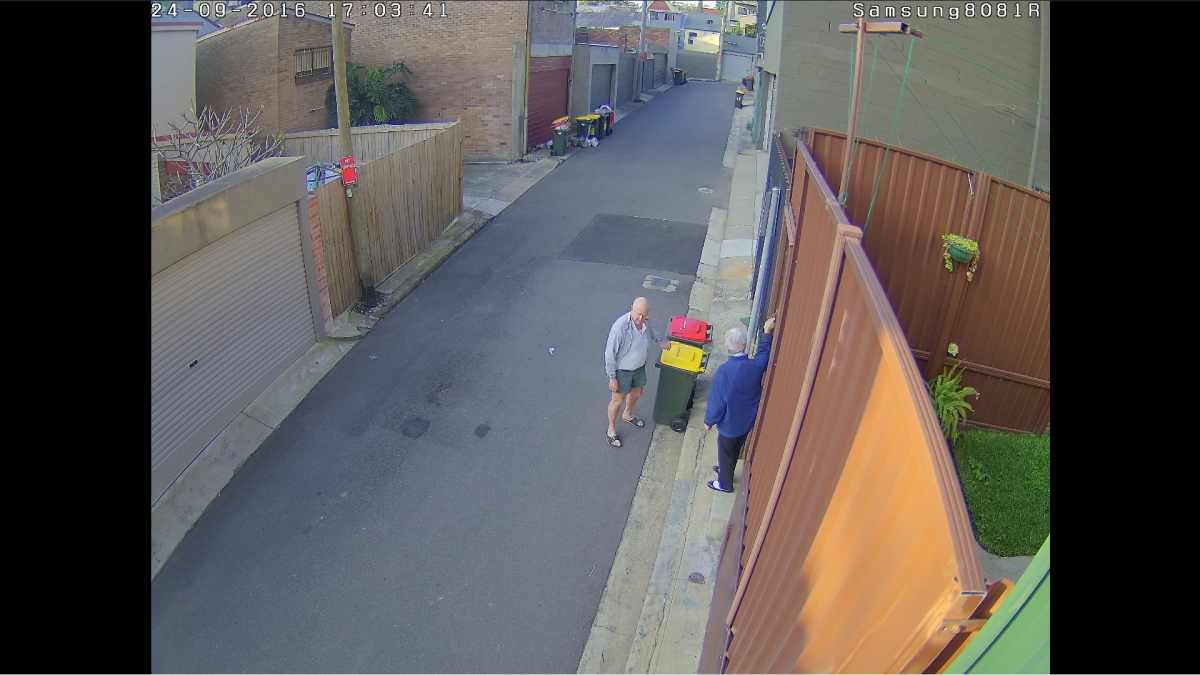
Importantly, the camera has distortion correction, which I later on deploy – you need it at full wide but at anything longer than 5mm, it’s not an issue. I spend some time at full tele, too, and have no issues with distortion there. Levels of detail with this camera are very high. Court admissible evidence in good light at beyond typical ranges is a piece of cake – this is an unusually powerful fixed dome camera.
I come back later on in the night and run through the night tests in the back lane for a change. The camera holds colour with 2.5 lux at the lens. I’m still at full wide. There’s noise in the image but it’s surprisingly little. Using digital zoom, I even have the A line. Norman’s face is not completely clear, mind you. I have the B line at 16m. Colour rendition is excellent. There are some CAs still but overall, it’s nice work, indeed. Motion blur seems low, too. I push the camera into night mode in the lane. It’s quite a dark image – I can see the IR is on and I check to confirm I have it set to full power – yes, I do.
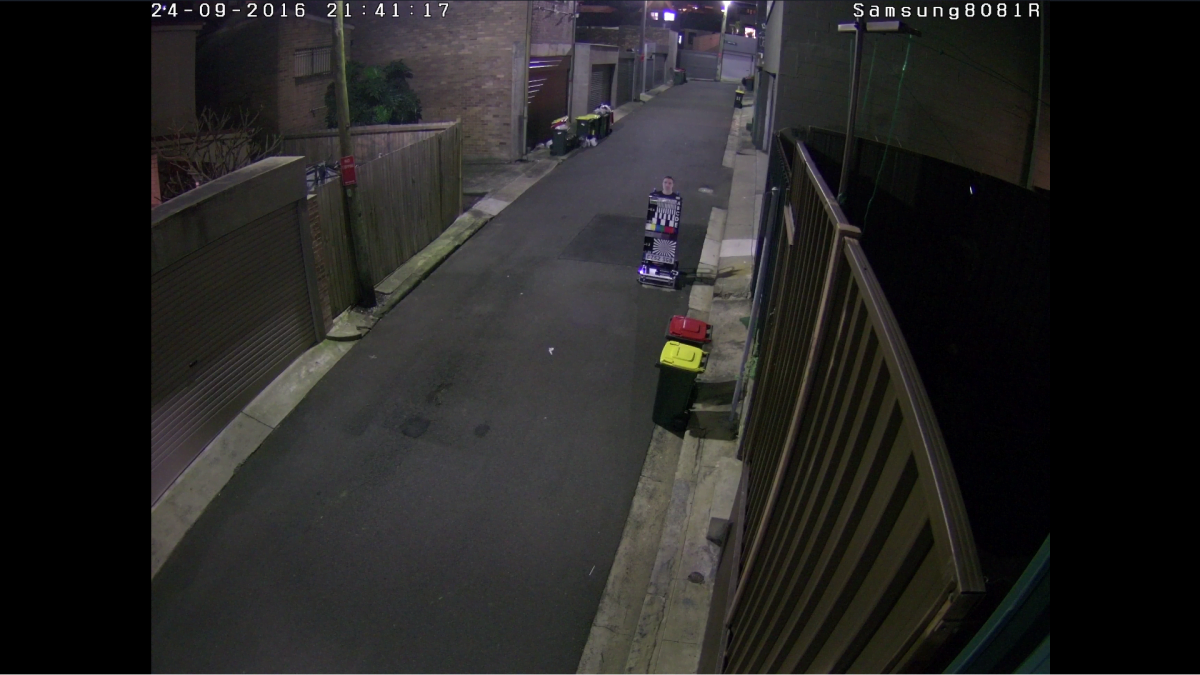
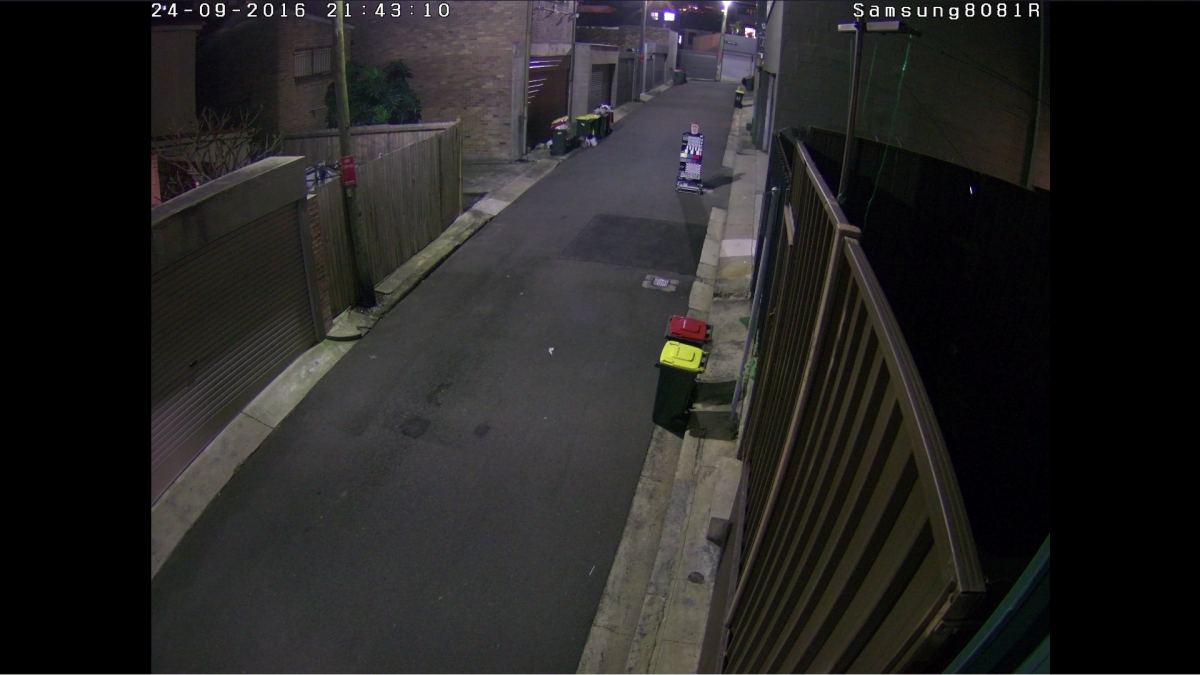
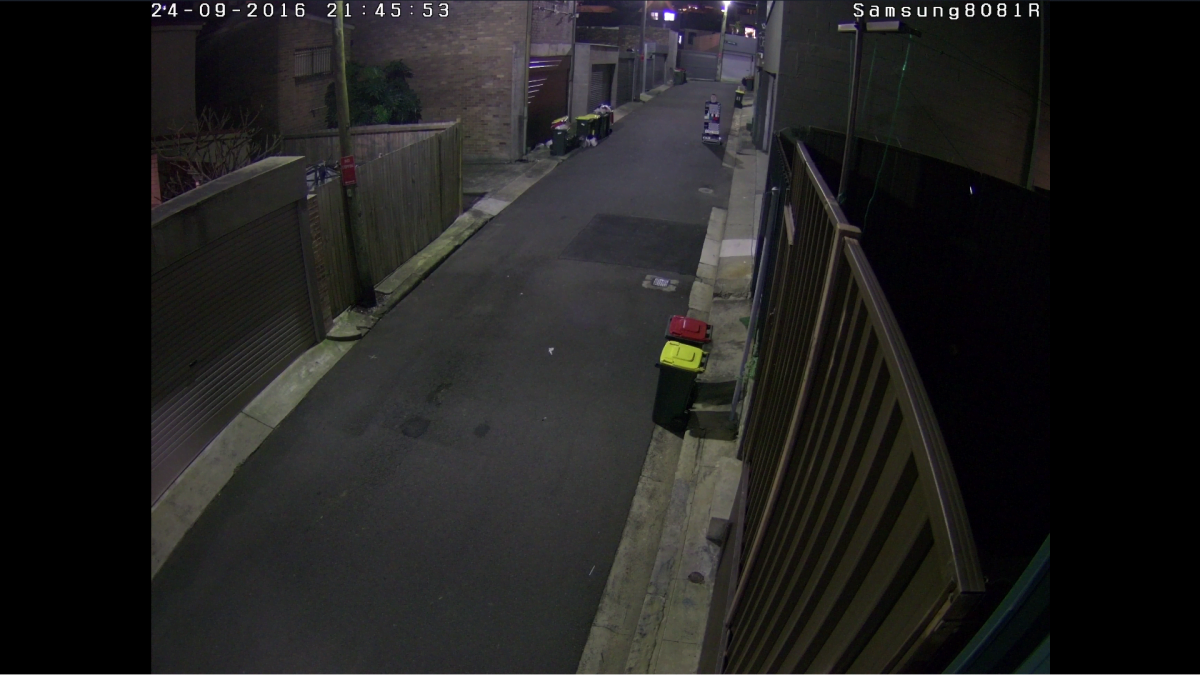
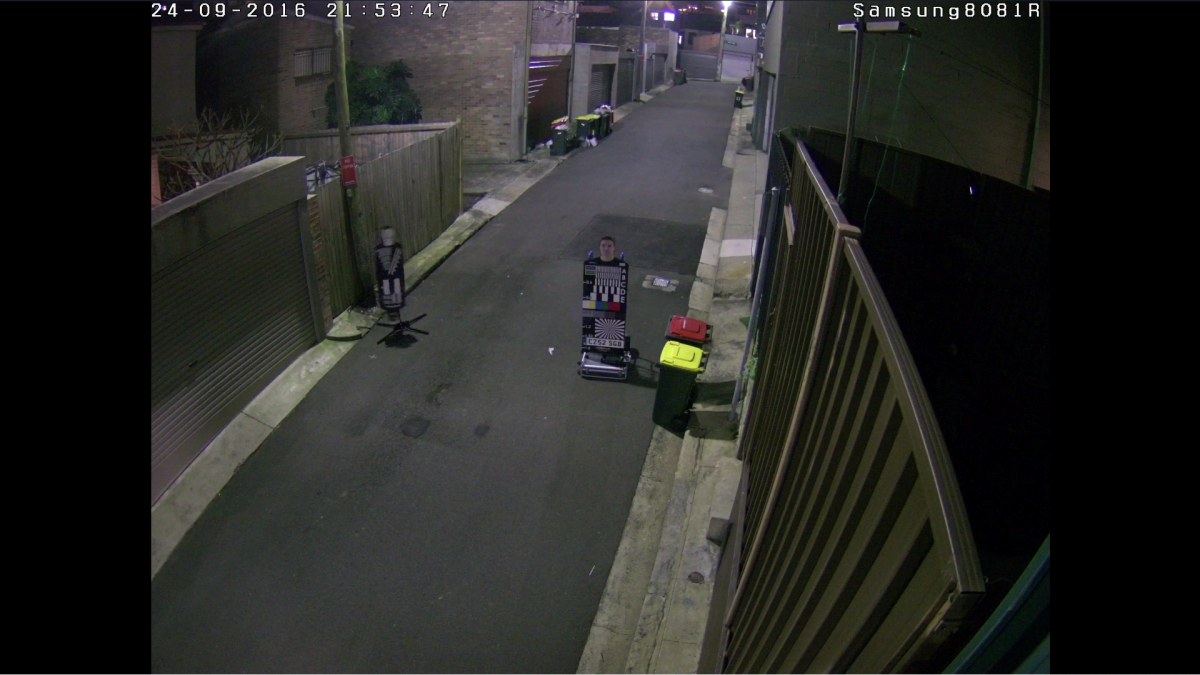
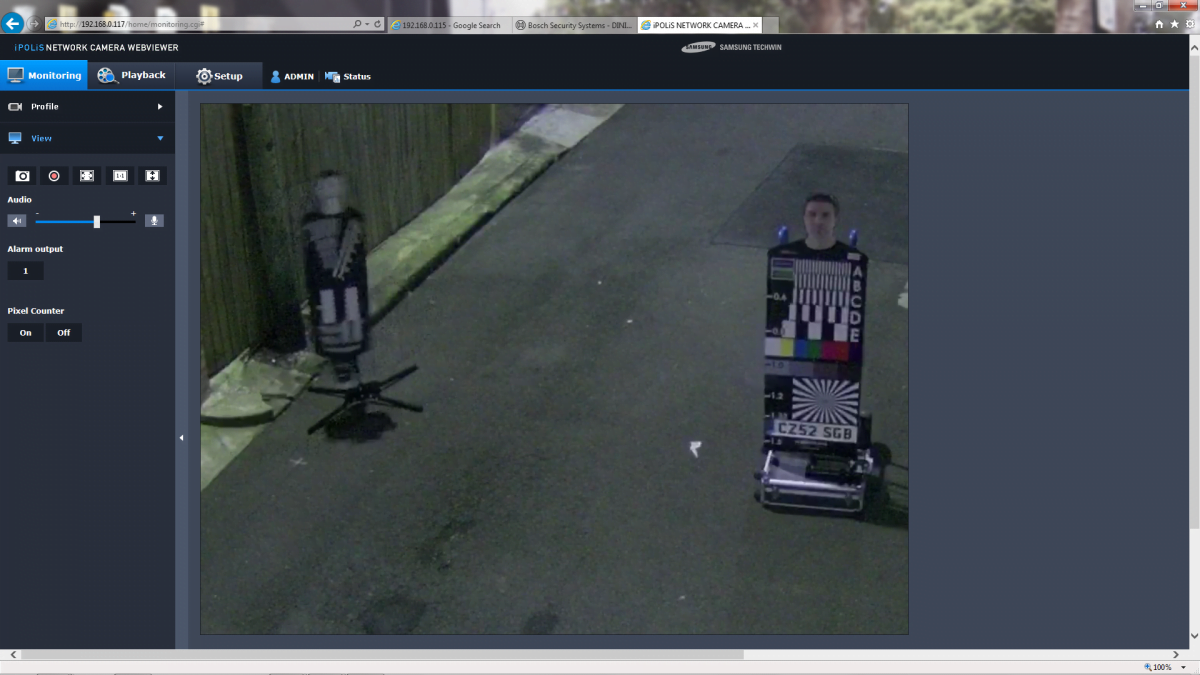
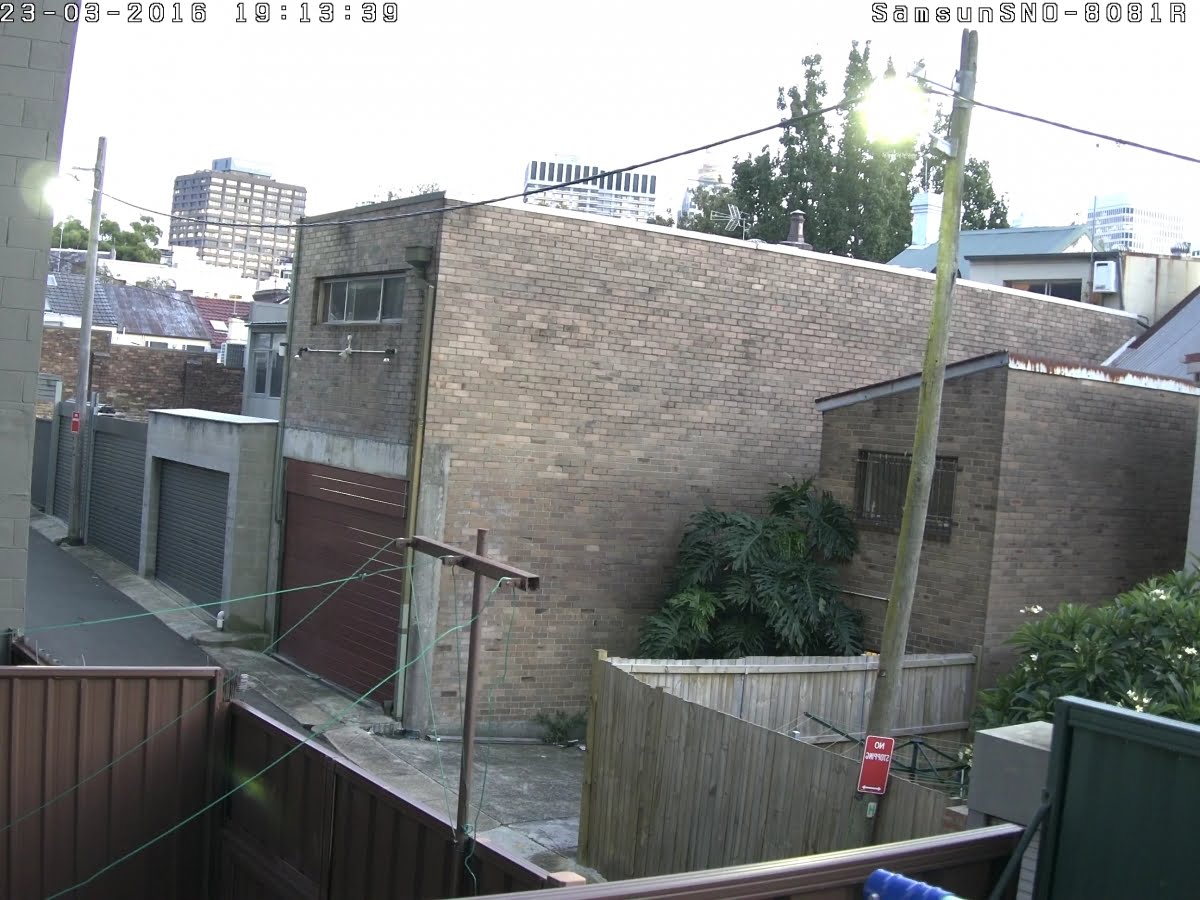
Night mode doesn't give me much, even with IR on. Locking the camera in day mode gives better performance when there's some light to be had.
Out the front next day in good light with trees and traffic flying about I can see some stepping of the image stream. Resolution is relentlessly excellent. Contrast and colour rendition are very strong and backlight performance is very good on the street, with extremely consistent dark-into-light transitions without any sign of over exposure – this is a real strength and one we don’t often see. There’s a lack of flare and ghosting. Zoom and focus are a bit slow for challenging live work but useable once you’re proficient and excellent for recommissioning.
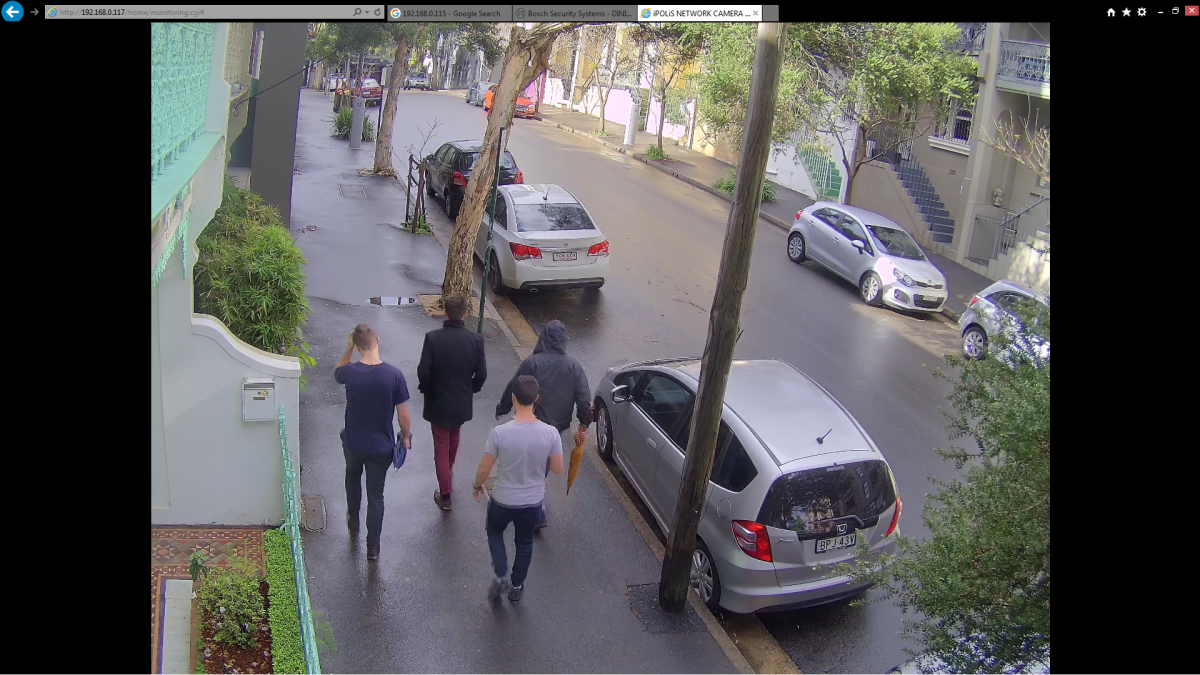
At wider lens settings there are latitudinal and longitudinal chromatic aberrations in scenes that are 6-7 pixels deep, so there are some compromises with the lens at the wide end. The CAs are most noticeable in situations of intense light – entrance ways and outside with objects close to the hyperfocal distance. I get them on the back of a crow sitting on the fence. Depth of field is always very strong. There’s no visible noise in the daylight image, which is great performance, too. You often see a pulsing of digital image streams – not with this Samsung. Noise increases as light levels fall in the evening but they are very well controlled.
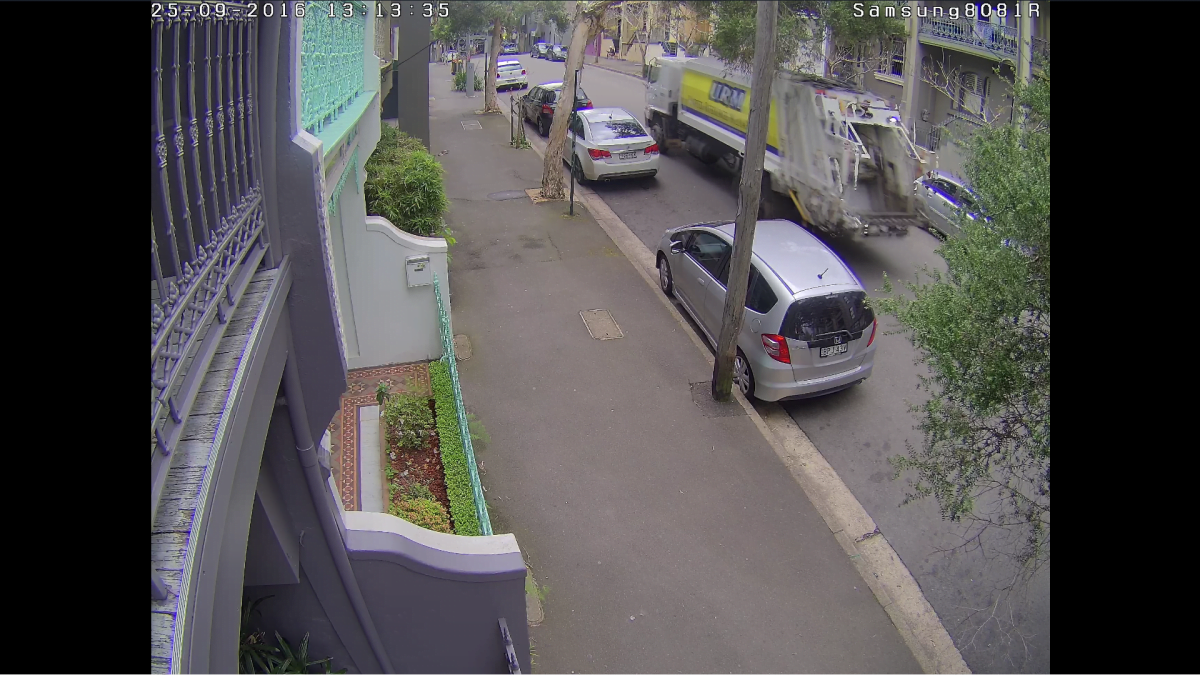
Out front I can’t get plates at traffic speeds even in good light – the high res sensor means the processing load is too great for that. But I can get them under about 10kmph. As well as blur, there’s some tone mapping artefacts in evidence.
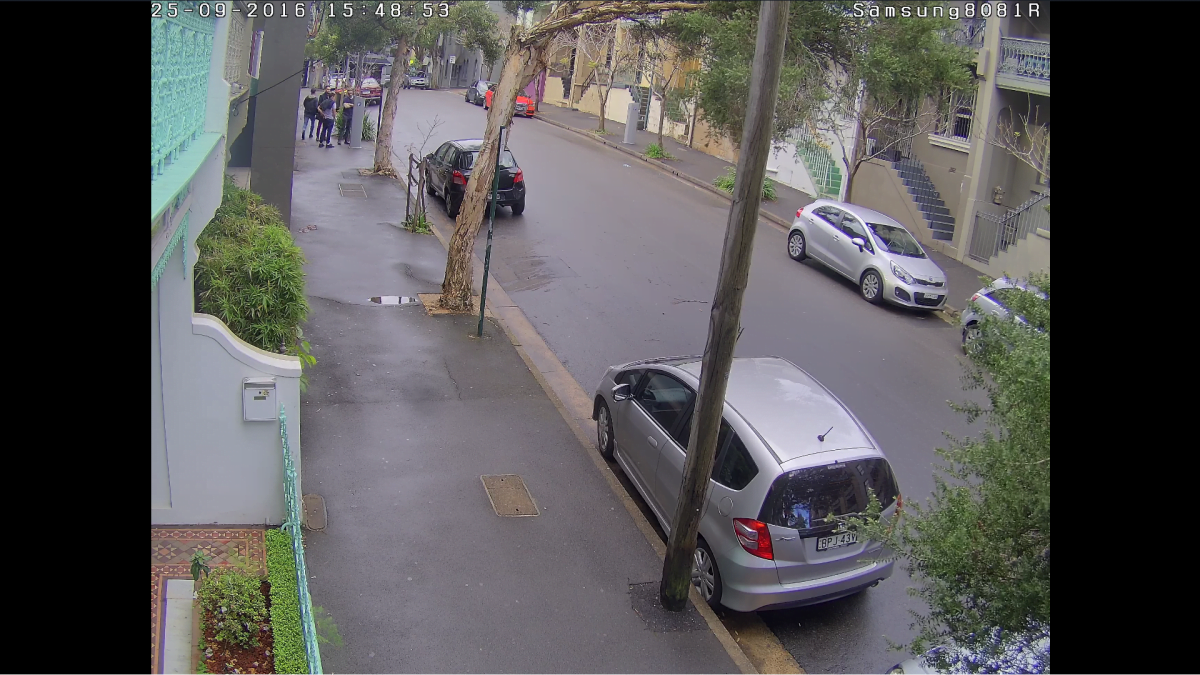

Digital zoom is strong…
At all times the level of detail with pedestrians and scene details is simply enormous very deep into the scene. I find that in the shadows between the towers around us, it’s not that shadowy mind you, I start getting blurry faces with pedestrians from about 4pm.
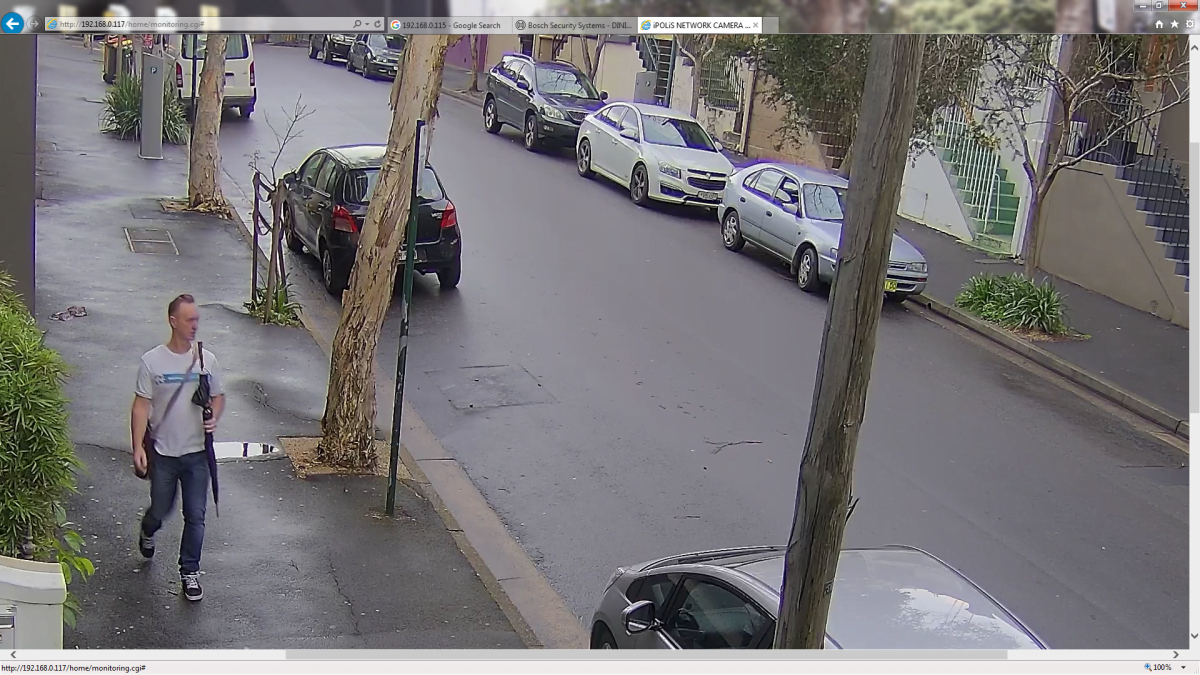
Raising shutter speed gives face ID without compromising huge angle of view and depth of field
After a while, I wick the shutter speed up to 1/60 of a second. The camera winds up brightness to compensate but the slight extra noise is a price worth paying for a little more detail. Blooming is well handled out the front in low light at 6pm, even with the slower shutter. I find I have court admissible faces to about 12m and very recognisable performance deeper still.
Playing around I find quick focus takes about 15 seconds to refocus after a zoom change. Not super quick but not too bad, either. The camera handles the falling light very nicely and uniformly and then surprises me by going smoothly into night mode at 6.12pm. Again, it’s a disappointment. The performance was much better in colour and I waste no time going into settings and locking myself back into colour in order to confirm my suspicions. I’m right.

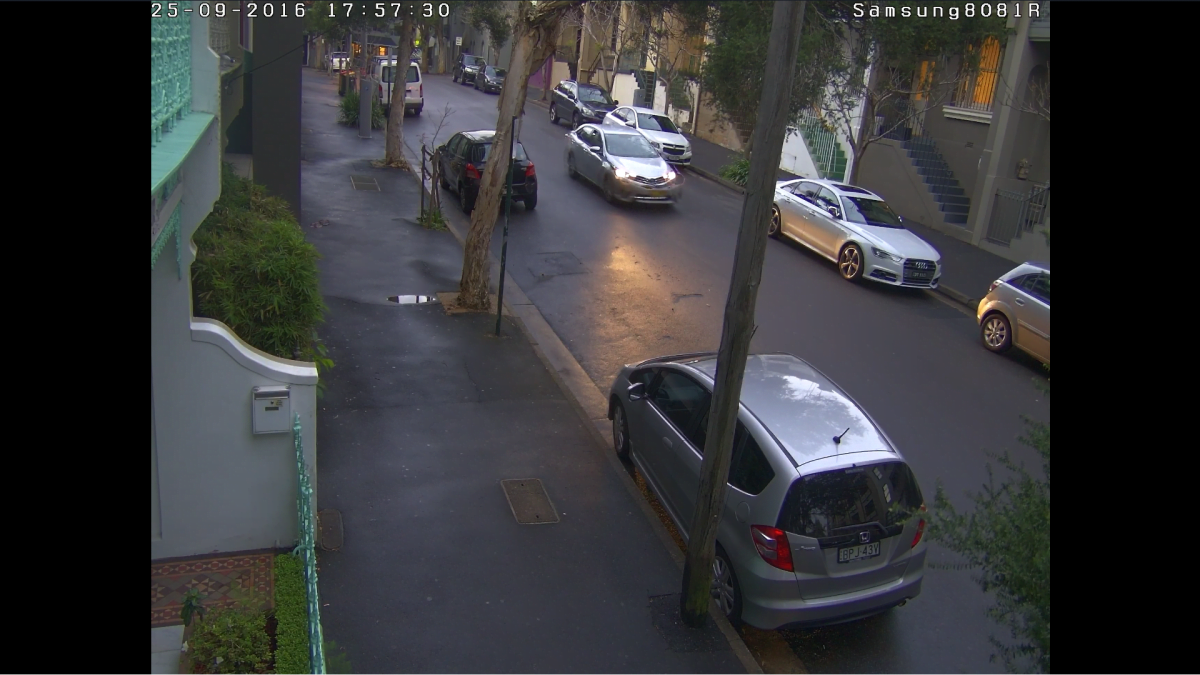

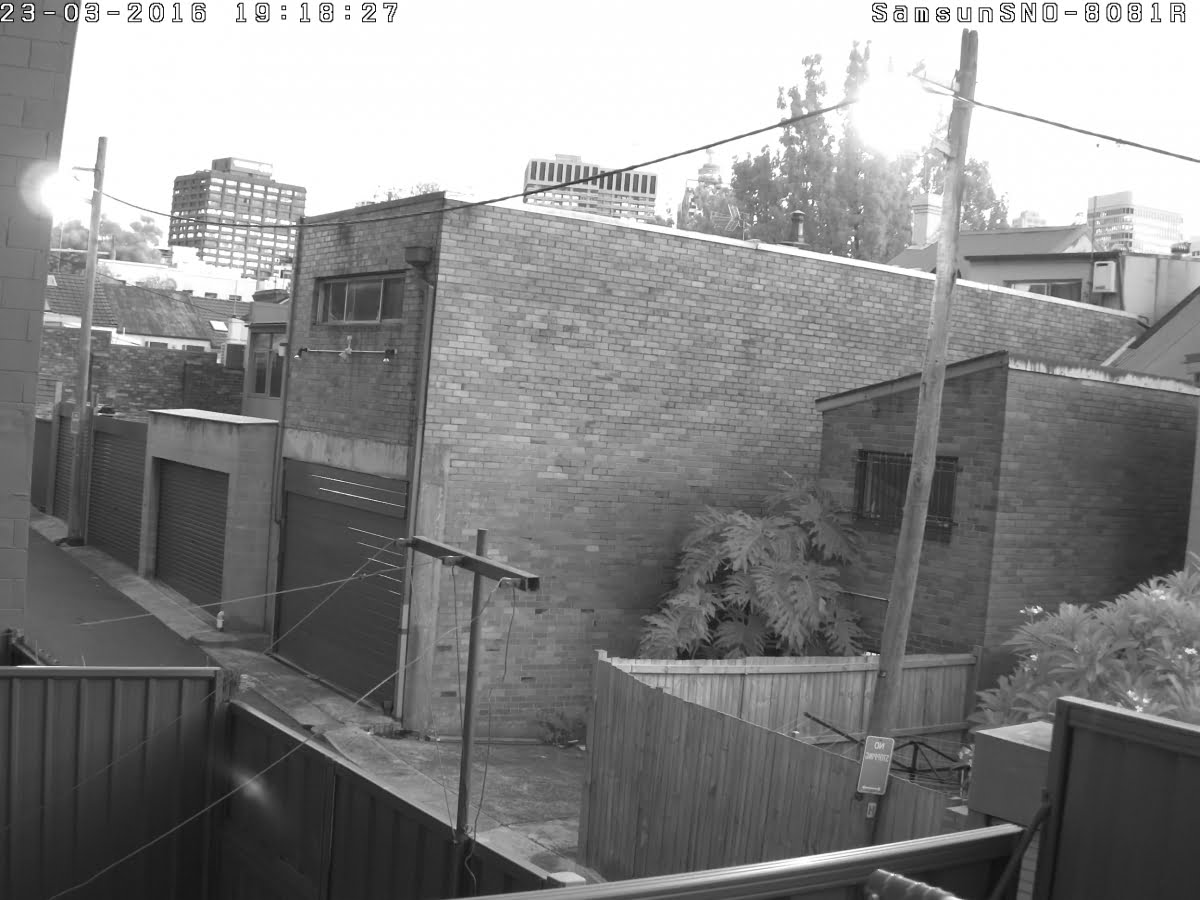
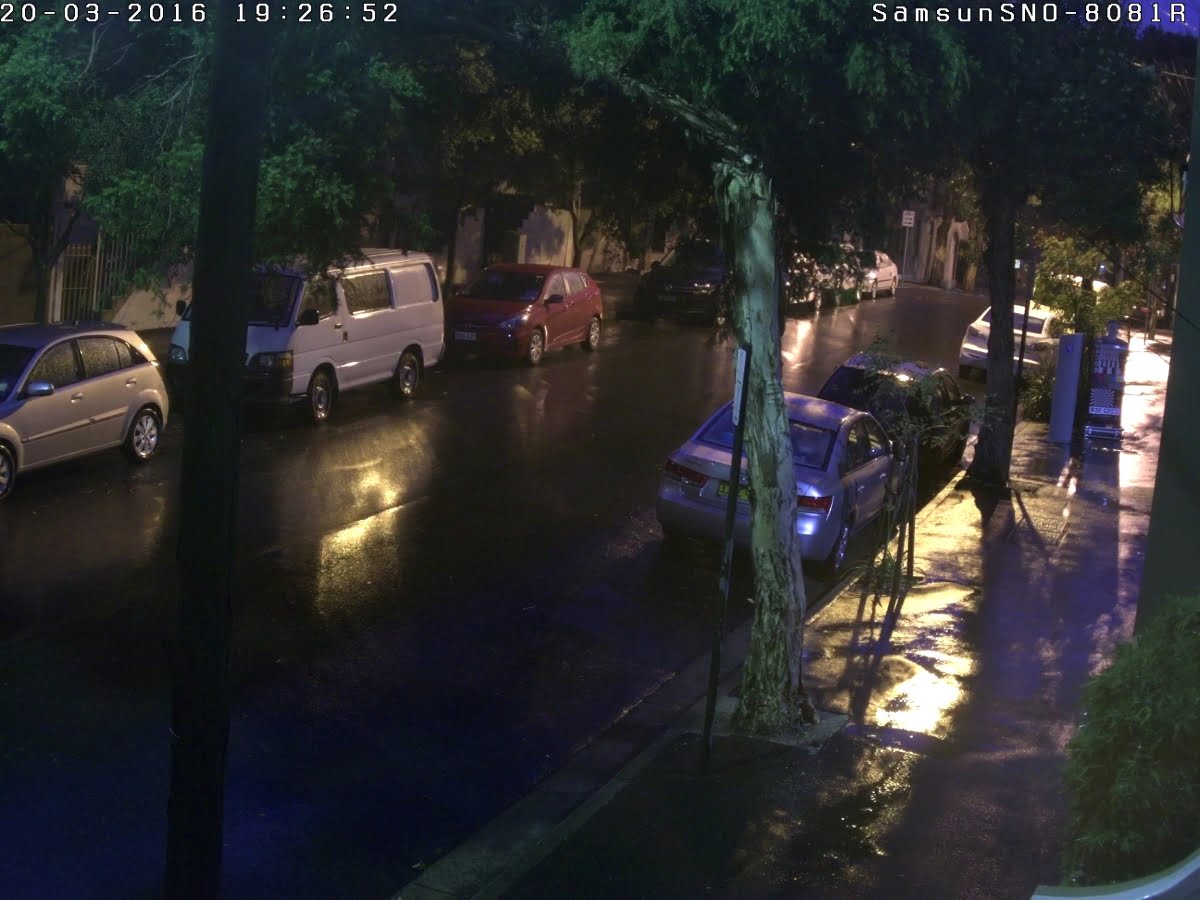
As you can see, colour performance is way better than night mode with IR activated with 7 lux at the lens…
This camera is gloomy in monochrome. In colour, I 1/30th of a second and things are good – a bit more blur but I still have faces and the camera does well with the ambient light in my 7-lux street application. It may be possible to enhance black and white performance but at default, monochrome is too dark. On the street I note IR is mild in strength. Even at full power, it doesn’t have much penetration past about 14m but it does well inside, providing plenty of contrasty detail.

I notice I still have chromatic aberrations on bright points and planes of light out front at night. For general surveillance it’s not a deal breaker – I’m at a mid-zoom point of around 6mm. I spend quite a while mucking about with the camera at night and discover digital zoom is very useful and the huge resolution contrives to give me more detail than I am expecting. Noise levels remain well controlled at night, too, even with the slower shutter encouraging a bit more work from the processor to compensate for the reduction in light levels.

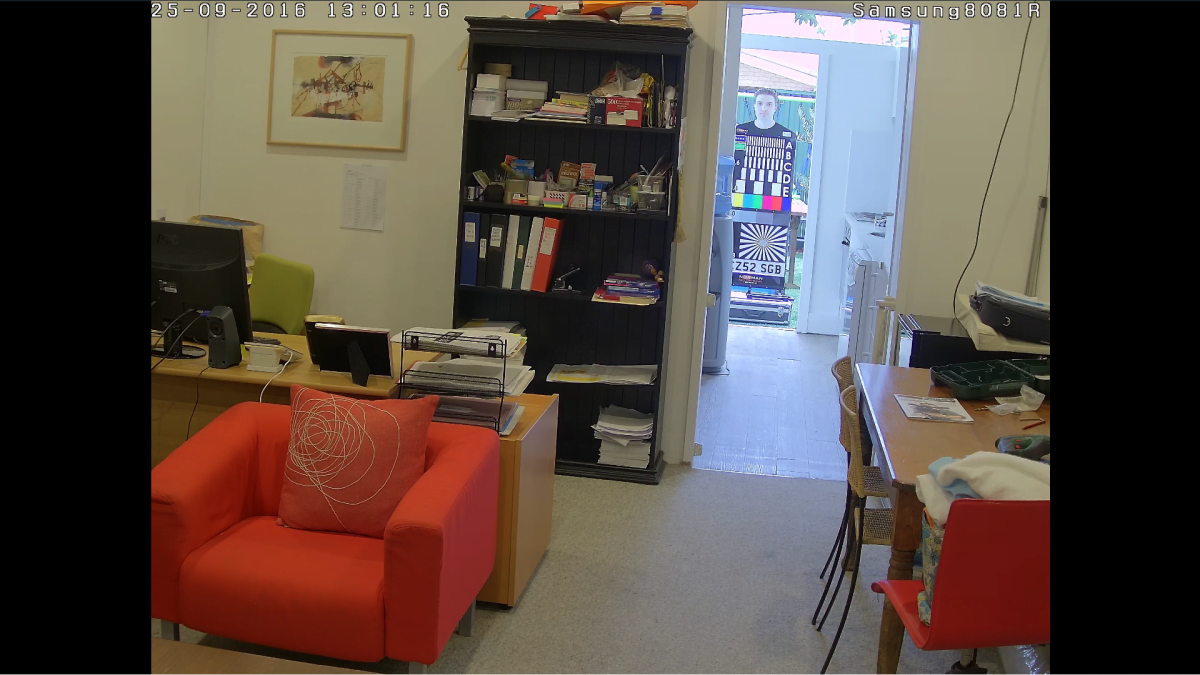

WDR performance is reasonably good – you can see those CAs at full wide – as well as that overexposure outside in the first image as the camera takes its measurements from the internal light levels and reduces shutter speed. Given I've got the camera mounted deeper into the room than usual, this WDR effort is better than it looks – my mounting choice was impacted by the need for a solid clamp point 10m from Norman – the last image is at tele.
Conclusions
This Samsung SNV-8081R dome is a good camera. It has vast resolution, which allows it to make the most of its flexible digital zoom range. Depth of field goes on and on. This high resolution sensor costs you moving detail in low levels of light but the huge levels of detail make the price worth paying in applications with light levels between 5-10 lux. The distortion correction works well, the ability to handle variables of light is exemplary – the camera has no tendency towards over exposure externally. Alongside the excellent resolution, colour work in low light is great with low noise, and WDR performance is decent, too.
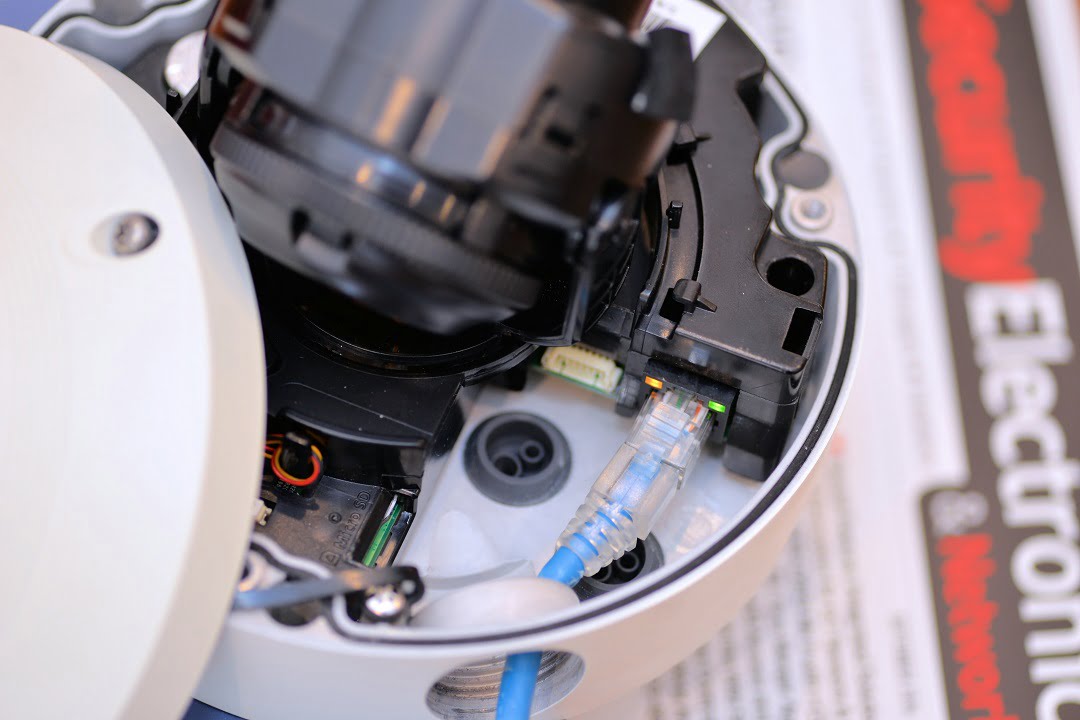
On the downside, the big sensor means no plates with fast moving traffic, loss of face ID if you leave default shutter speed at 1/30th of a second or less in failing light, weak performance in monochrome, and you get some chromatic aberrations in areas of very strong light. None of these factors would stop me installing this extremely powerful fixed dome camera in applications that suit it – applications with some light (5-10 lux minimum) so as to give useful colour in areas where there are lots of walking people, huge angles of view and complex environments. ♦
By John Adams
Key Features of the Samsung SNV-8081RP:
• Max 5MP (2592 x 1944) resolution
• 0.1 Lux @F1.2 (Colour), 0Lux (B/W IR on)
• 30fps @ all resolutions
• 3.6 ~ 9.4mm (2.6x) motorized varifocal
• H.265/H.264/MJPEG support
• Day & Night (ICR), WDR (120dB)
• Simple focus, P-Iris
• Tampering, Audio detection
• SD/SDHC/SDXC memory slot, NAS, Local PC support
• Hallway view (Rotate 90/ 270 degrees)
• LDC (Lens Distortion Correction)
• IP66 / IK10.



